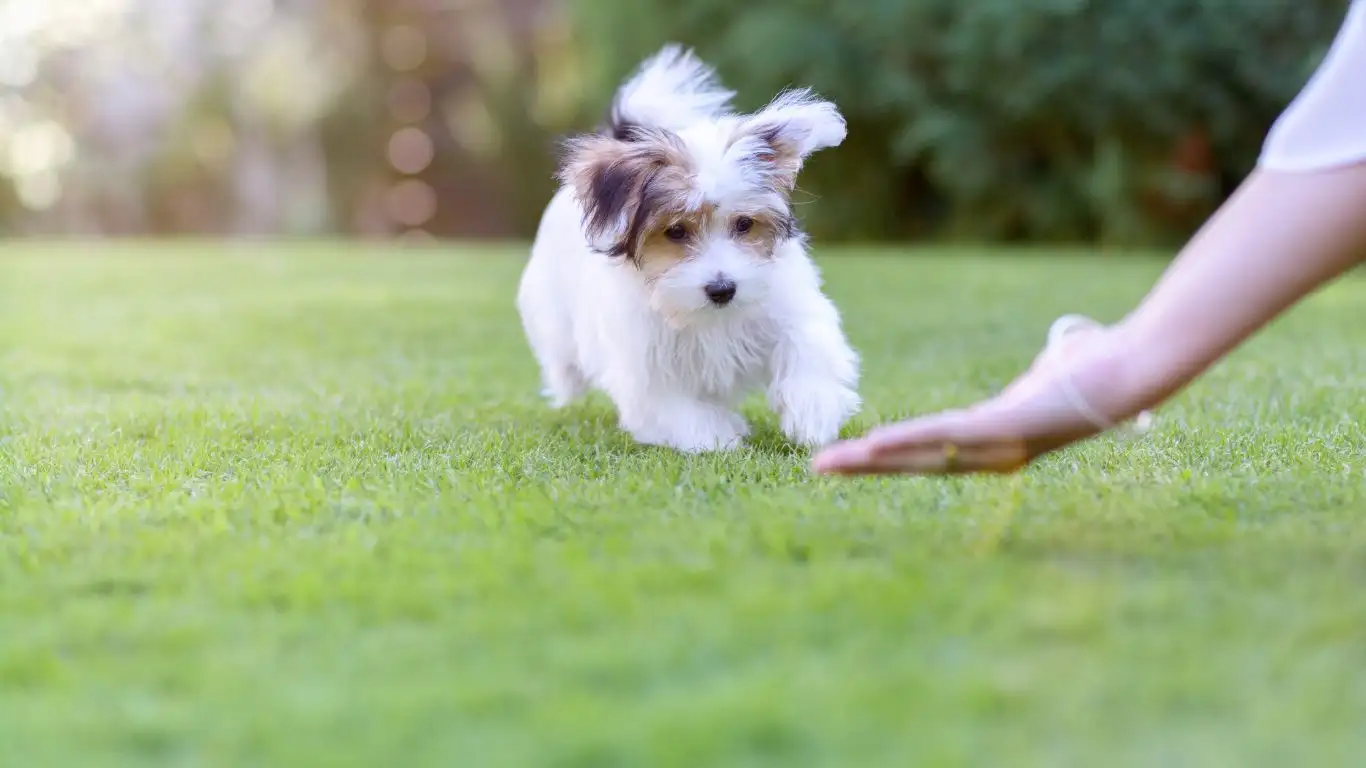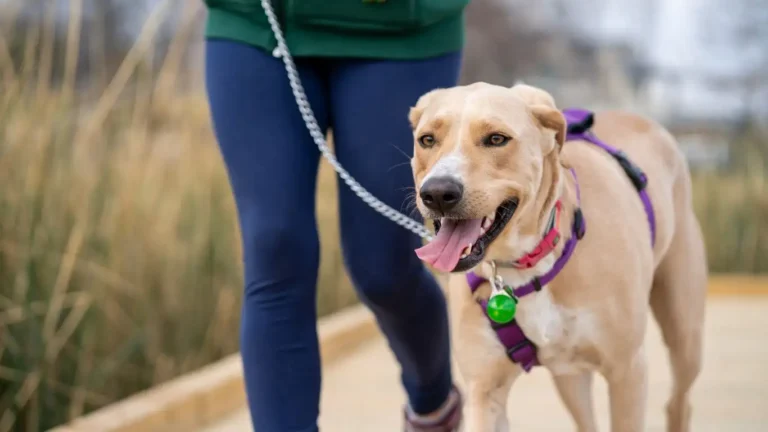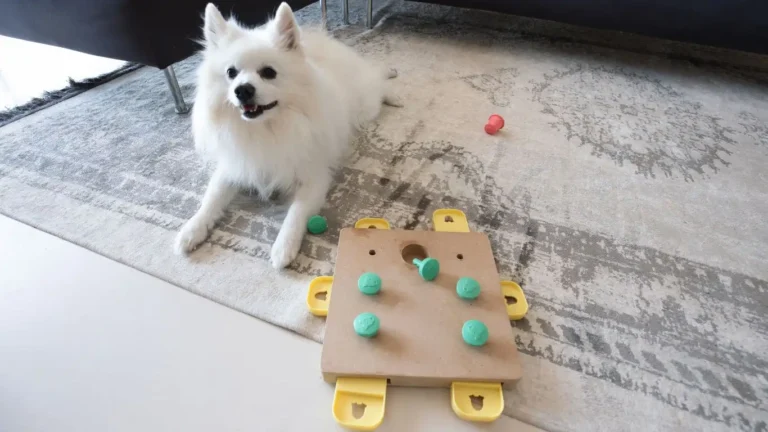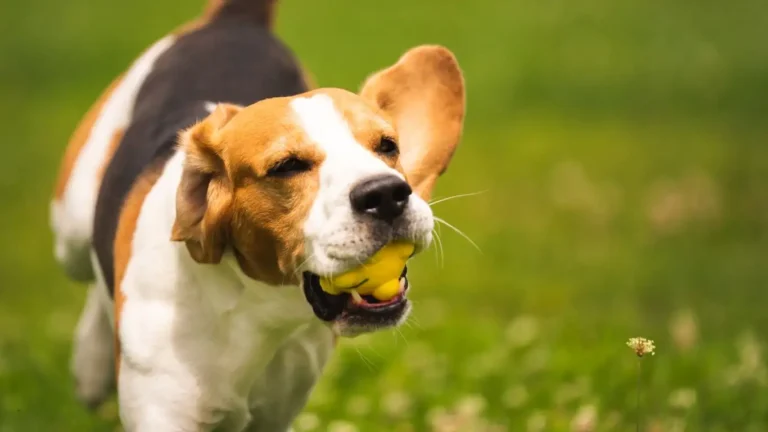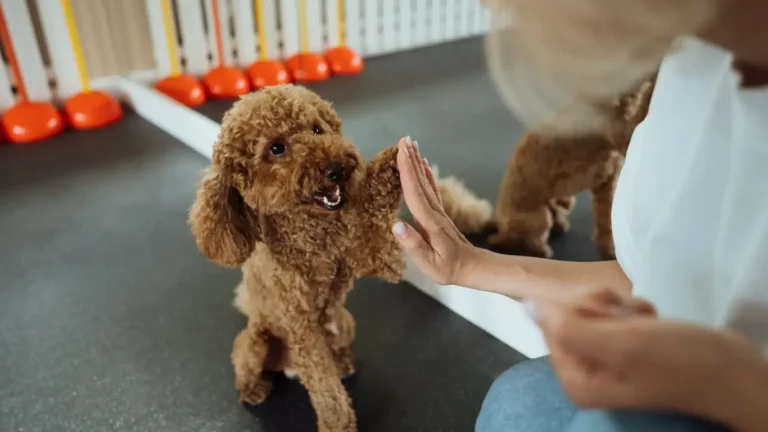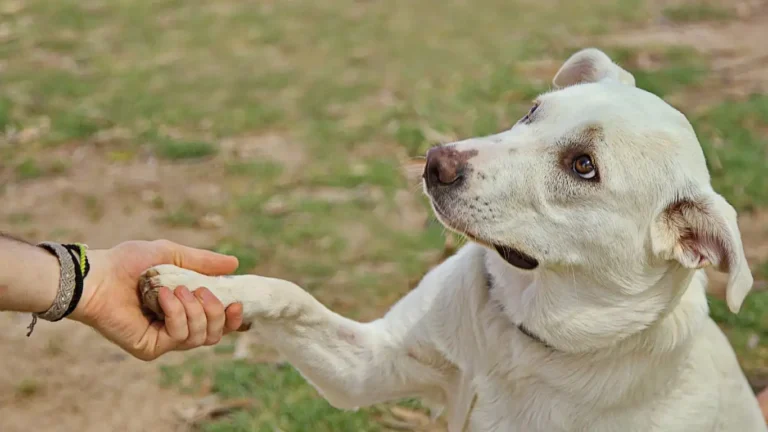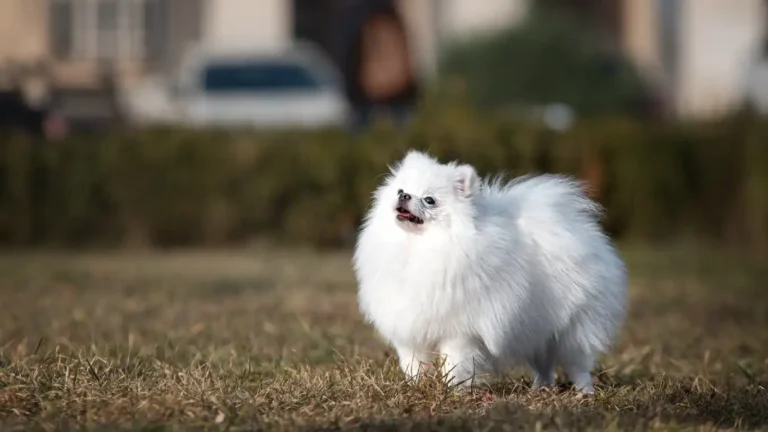Teach Your Dog to Respect Personal Space: Stop Jumping & Clinginess
Teaching a dog how to respect personal space is a game-changer, not just for you but for your pup’s manners. If your dog constantly jumps on guests, crowds your personal bubble, or pushes into your lap uninvited, it’s time to set some gentle but firm boundaries. As a CPDT-KA certified trainer, I’ve worked with countless dogs (and their exasperated owners) to create a balance between affection and respect. Trust me—dogs aren’t born with the knowledge of human personal space, but they can absolutely learn it with the right approach!
Why Do Dogs Invade Personal Space?
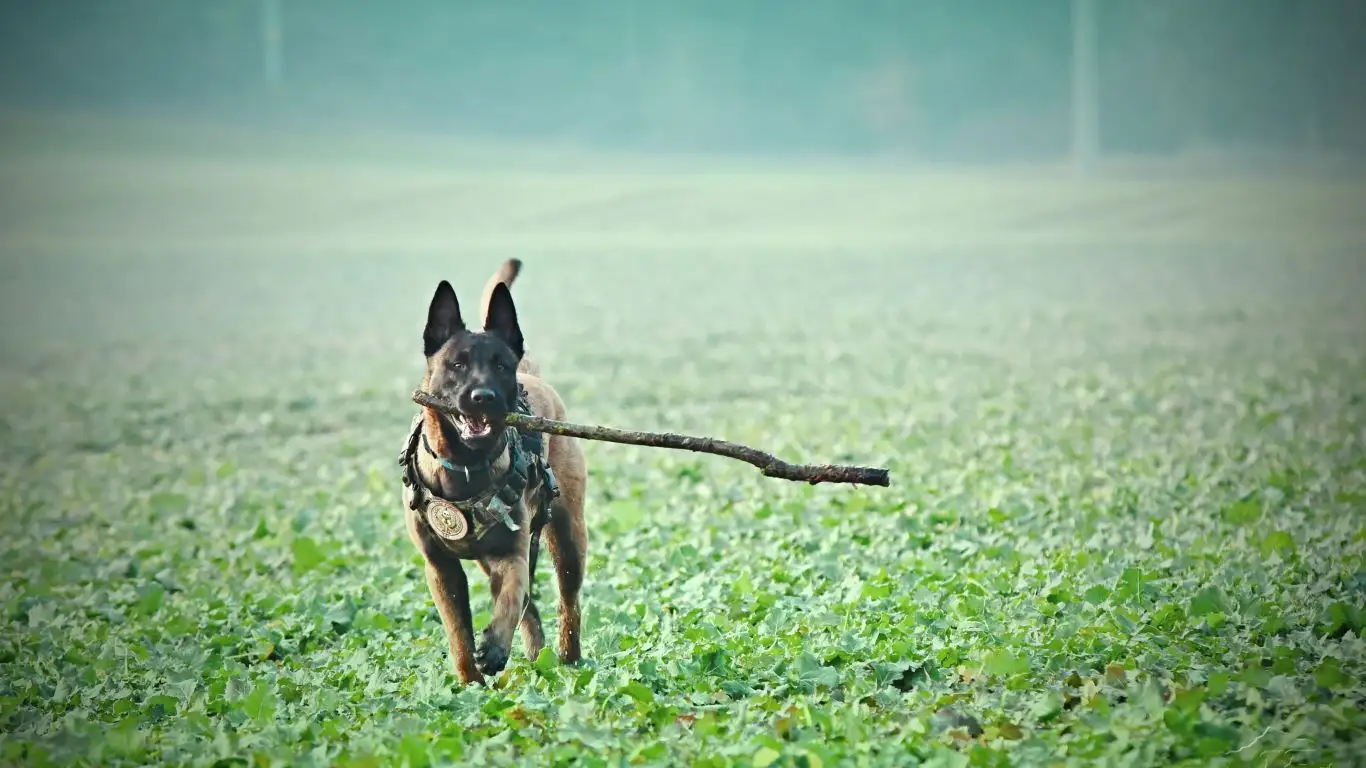
Before diving into the how, let’s talk about the why. Dogs aren’t being “bad” when they invade personal space—it’s just instinct. Here are a few reasons your pup might be glued to you:
- Affection & Bonding: Dogs are naturally social creatures. Some breeds, especially velcro dogs like Labradors and Golden Retrievers, crave closeness.
- Anxiety or Fear: A dog that clings to you might be insecure or nervous, using physical proximity as a coping mechanism.
- Reinforced Behavior: If pushing into your lap earns belly rubs and attention, your dog learns that invading your space = rewards.
- Excitement & Lack of Impulse Control: High-energy dogs, especially puppies, don’t always know how to control their enthusiasm.
Understanding these reasons helps us approach training with patience and empathy.
Setting Boundaries: How to Train a Dog to Respect Personal Space
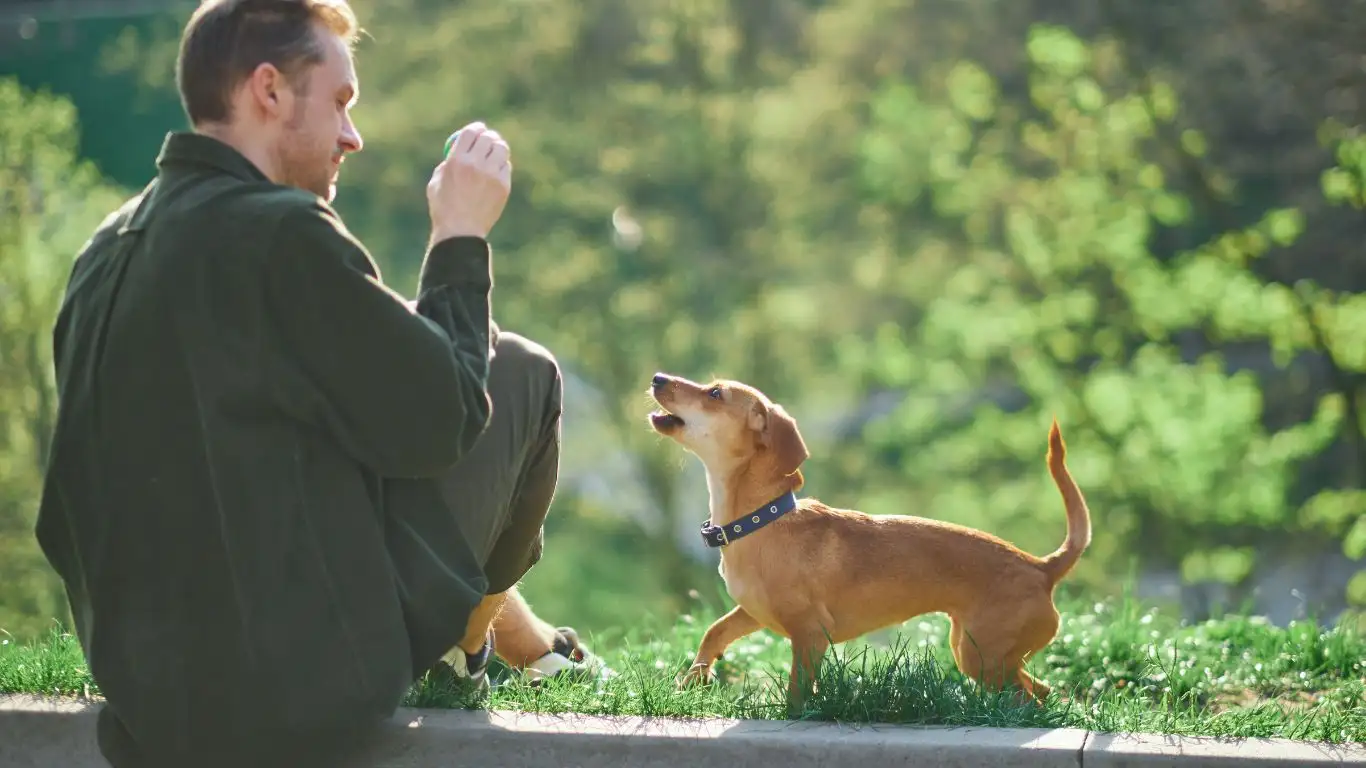
Just like teaching a kid about personal boundaries, dogs need clear and consistent signals. Here’s a structured approach that has worked wonders with my training clients.
Step 1: Teach a Solid “Back” or “Off” Command
If your dog constantly jumps on you or crowds your space, teaching them a reliable “Back” or “Off” command is crucial.
- Start with a treat in your hand. Hold it near your chest and wait for your dog to naturally step back.
- Mark the movement. The moment your dog moves back, say “Back” (or “Off”) in a calm tone and reward them.
- Repeat and add distance. Once they understand the command, start giving the cue before they step into your space.
Many dogs pick this up within a few short training sessions, but consistency is key!
Step 2: Use Body Language to Reinforce Boundaries
Dogs are experts at reading body language, so use it to your advantage:
- Stand tall and claim your space. If your dog rushes into you, step forward slightly instead of stepping back. This signals that your space is not up for grabs.
- Turn away from pushy behavior. If your dog is jumping or leaning into you, avoid petting or engaging until they settle.
- Use a firm but calm voice. Saying “Uh-uh” or “No” in a neutral tone can discourage overexcitement.
Step 3: Reward Calm & Respectful Behavior
Dogs thrive on positive reinforcement, so don’t just correct unwanted behavior—reward the good!
- When your dog sits calmly instead of invading your space, reward them with a treat or praise.
- Use petting as a reward only when your dog is displaying polite manners.
- Encourage a default behavior, like sitting, whenever they approach people.
These small reinforcements create a habit of polite interactions.
Practical Exercises to Reinforce Personal Space
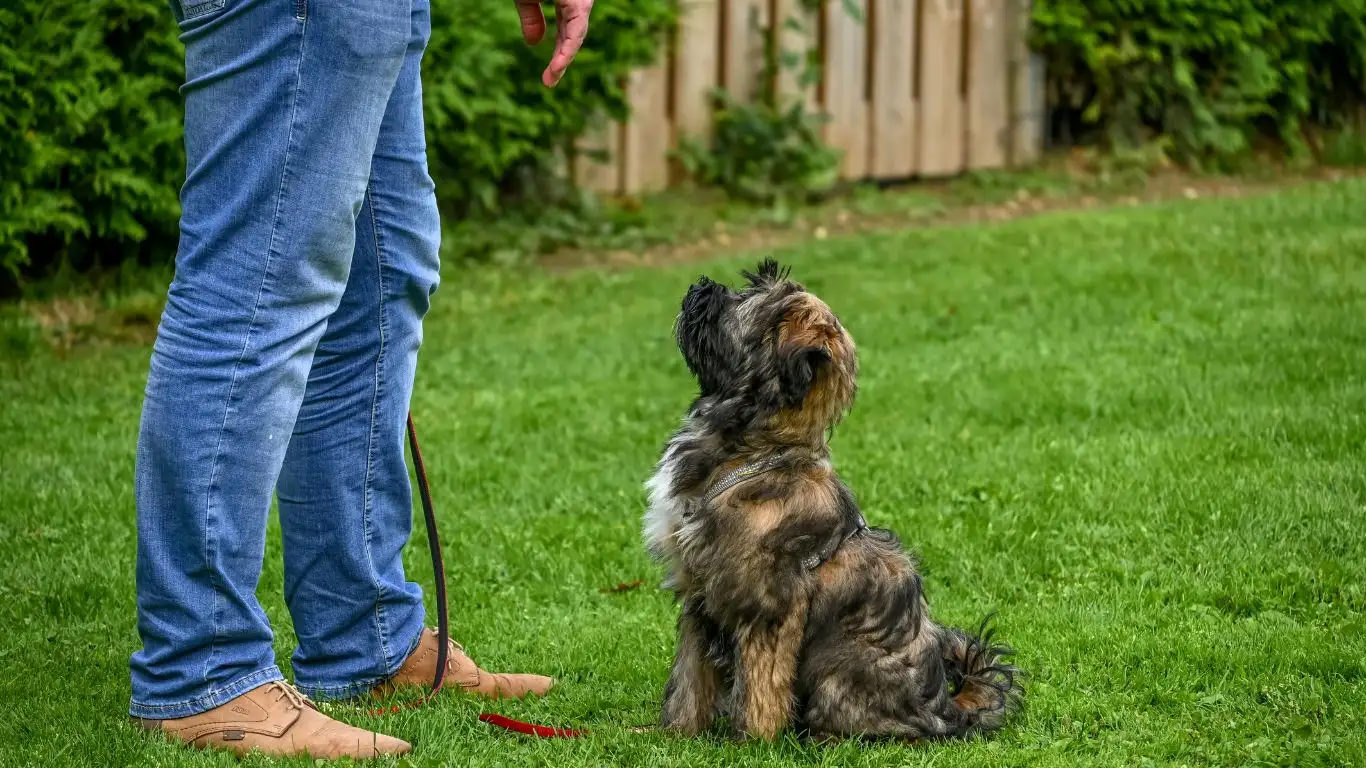
The “Invisible Bubble” Game
One of my go-to exercises is the Invisible Bubble Game, which teaches dogs to respect space in a fun, structured way.
- Stand still with treats in hand. Your dog will likely come toward you.
- Wait for them to pause or step back. The second they create space, mark it with “Yes!” and reward.
- Gradually increase the distance. Over time, your dog will learn that staying out of your personal bubble earns rewards.
This exercise works wonders, especially for clingy dogs!
Place Training for Space Awareness
Teaching your dog a “Place” command is another great way to reinforce personal space boundaries.
- Choose a bed or mat and introduce it as their “place.”
- Lead them to the spot, say “Place,” and reward them for staying.
- Gradually increase the duration and distance from you.
This teaches them that having their own space is a positive thing.
Common Mistakes That Undermine Personal Space Training
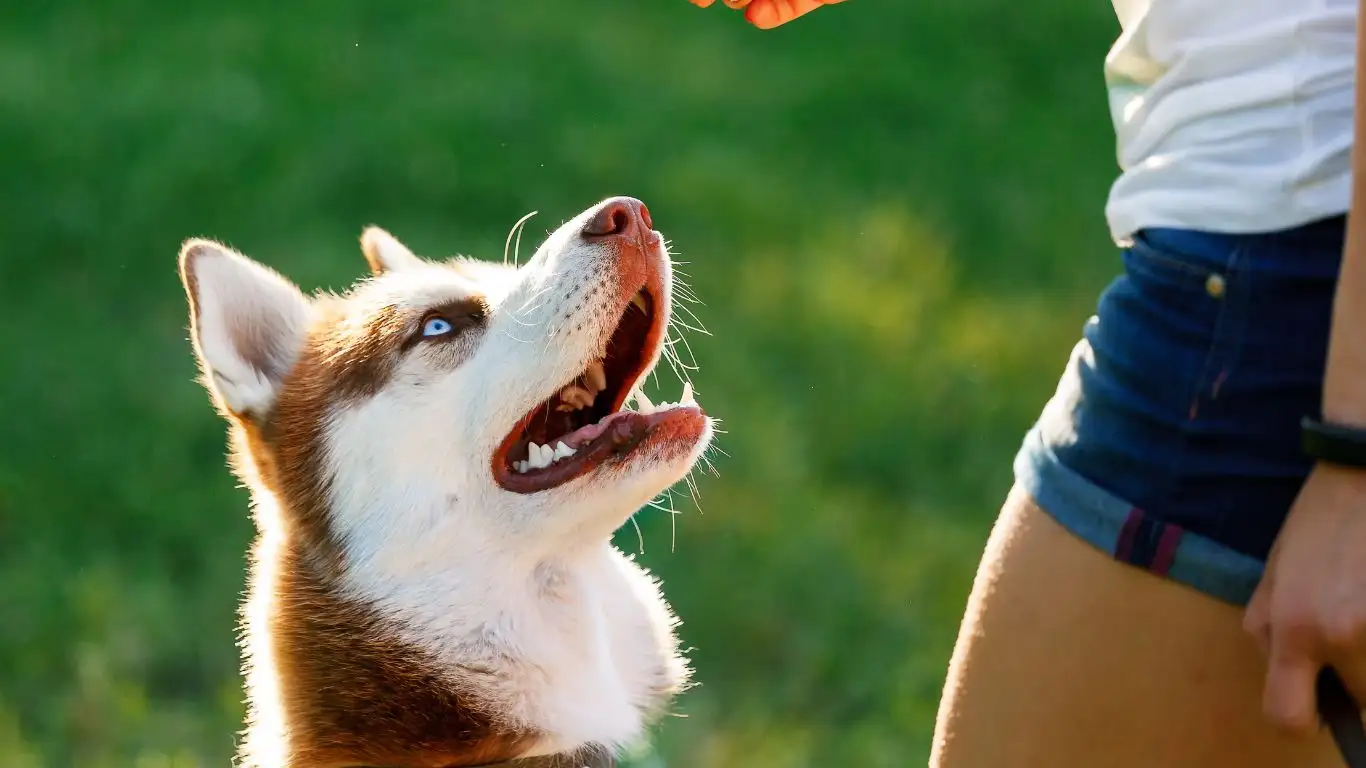
In my years of training dogs, I’ve seen a handful of common missteps that slow down progress. If your dog isn’t quite getting the concept of personal space, you might be making one of these mistakes without realizing it.
1. Inconsistency in Reinforcement
Dogs thrive on consistency. If one family member allows the dog to jump up while another corrects it, your pup is going to be confused. Everyone in the household needs to be on the same page when it comes to setting and enforcing space boundaries.
2. Accidentally Rewarding Pushy Behavior
This happens more often than people think. If your dog shoves into your lap and you absentmindedly pet them, you’re reinforcing the very behavior you want to stop. Even eye contact or speaking to them in that moment can act as a reward.
3. Over-Reliance on Verbal Commands
Dogs are experts at reading body language, often responding to it better than words. If you only use verbal commands without reinforcing them with physical cues—like stepping forward when they crowd you—they may struggle to understand what you want.
4. Expecting Instant Results
Some dogs pick up on personal space training quickly, while others need more time, especially if they’ve been allowed to invade space for years. Patience and persistence are key.
When Personal Space Training Becomes Essential

While it’s always beneficial for a dog to learn personal space boundaries, in certain situations, it becomes absolutely necessary. Here are a few scenarios where this training is a lifesaver.
1. When You Have Guests Over
Not everyone is a dog lover (hard to believe, I know). A well-mannered dog who respects personal space makes for a much better experience when friends and family visit. No more jumping on guests or forcing affection on someone who isn’t comfortable with dogs.
2. Living with Small Children
Young kids can be unpredictable, and a dog that constantly invades their space can unintentionally cause harm. Teaching personal space boundaries helps keep interactions between kids and dogs safe and stress-free.
3. Working from Home
If you’re trying to focus on work and your dog insists on climbing into your lap or nudging you constantly, it’s time to set some space rules. Teaching a “place” command can help them learn when it’s time to settle down.
4. Managing Anxious or Fearful Dogs
For dogs with anxiety, personal space training can help create a sense of structure and stability. It prevents them from becoming overly clingy and encourages confidence in their independence.
How to Train a Dog to Respect Personal Space in Public
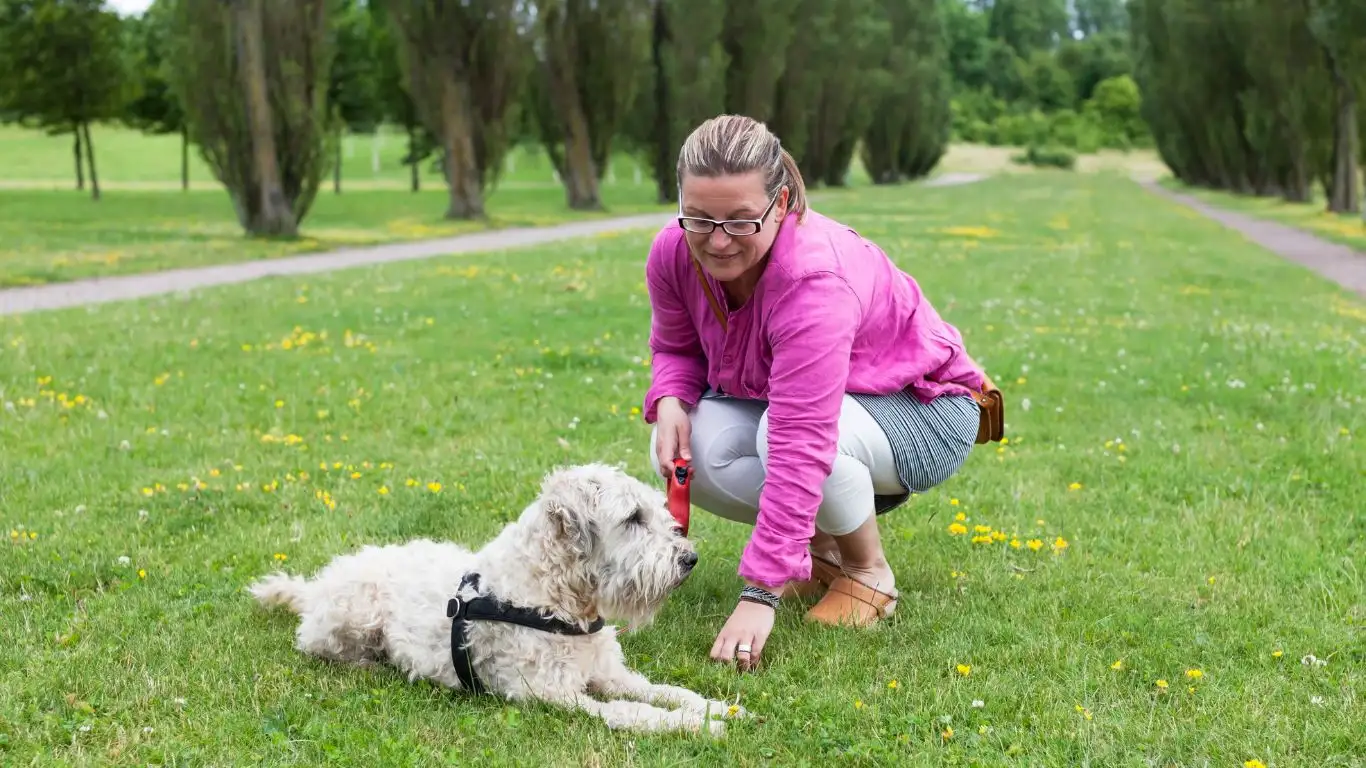
So far, we’ve talked about setting boundaries at home, but what about when you’re out in the real world? Whether at the park, a café, or on a walk, teaching personal space awareness in public settings is just as important.
1. Teaching a “Wait” Command
One of my favorite ways to teach space awareness outside the house is by using a simple “Wait” command. This helps your dog understand they don’t have to rush into every interaction.
- Start on a leash. If your dog is about to walk up to a person or another dog, stop and say “Wait.”
- Hold them in place. Use a treat or a light leash cue to encourage them to pause.
- Reward them for holding back. Once they remain still for a few seconds, give them praise and a treat.
With practice, your dog will learn that pausing before engaging with others is the right move.
2. Training with a Long Leash
If your dog has a habit of running up to strangers uninvited, try working with a long training leash in an open space. Allow them to move around, but if they start heading toward someone, give a verbal cue like “Stay here” or “Come back.” Reward them for staying within a respectful distance.
3. Teaching a “Leave It” Cue for Personal Space
Sometimes, dogs get overly eager to interact, whether with other dogs or humans. Teaching a solid “Leave it” cue helps them disengage when necessary.
- Hold a treat in your hand. Let your dog sniff but don’t let them take it.
- Say “Leave it.” The moment they stop trying, reward them with a different treat.
- Apply it in real-world settings. If they get too close to someone, use “Leave it” to redirect their focus.
With consistent reinforcement, your dog will understand that sometimes, backing off is the right choice.
Encouraging Independence While Maintaining Affection
One of the biggest concerns I hear from dog owners is, “But I love my dog being close! I don’t want them to feel rejected.” Let me be clear—teaching a dog to respect personal space doesn’t mean you have to push them away completely. It’s about setting healthy boundaries so that affection is mutual and consensual.
- Invite, don’t allow. Teach your dog that affection happens on your terms. Instead of letting them invade your space whenever they want, call them over when you’re ready.
- Use a designated cuddle spot. Have a special spot (like a blanket or couch section) where they’re allowed to be close when invited.
- Balance closeness with independent time. Encourage your dog to enjoy solo activities like puzzle toys, bones, or resting in their bed.
By striking this balance, you can still enjoy all the cuddles while maintaining respectful space boundaries.
Building Long-Term Respect for Personal Space
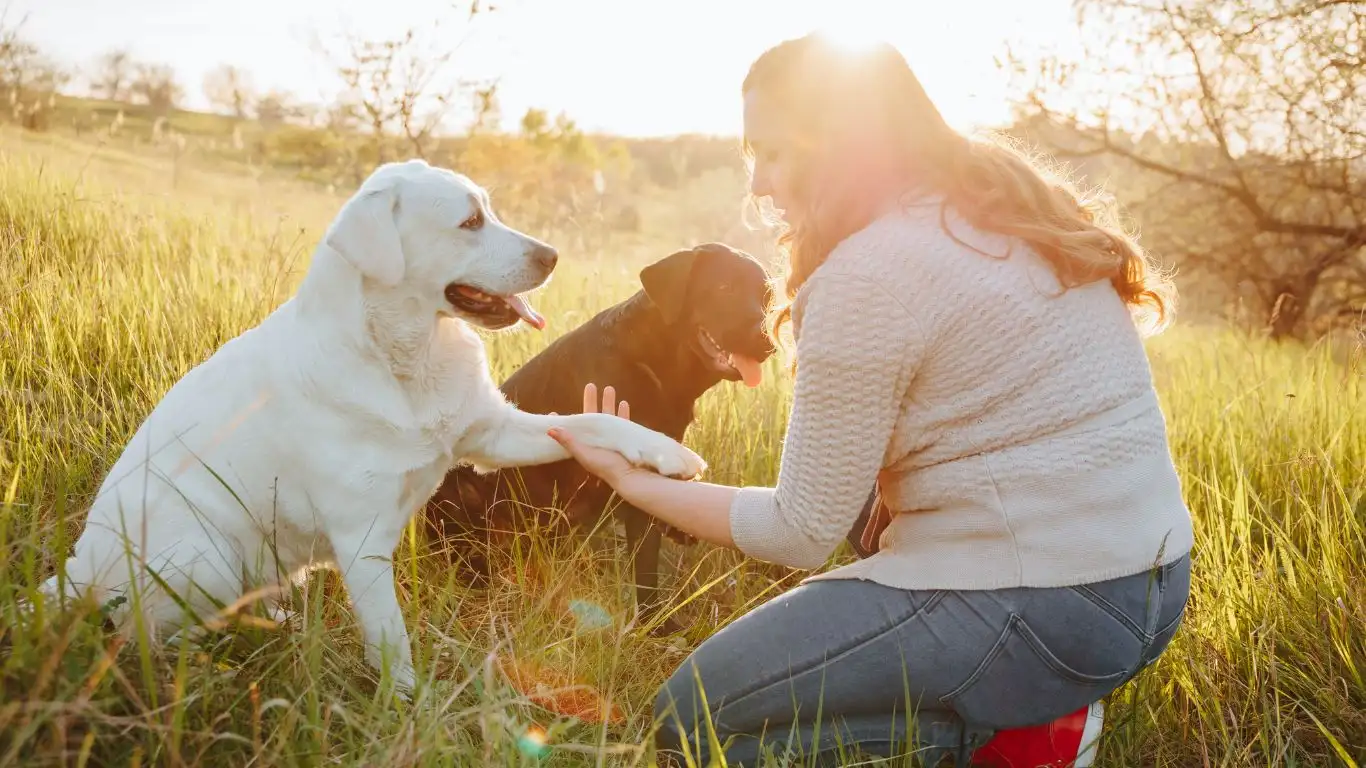
By now, you’ve got a solid foundation for teaching your dog to respect personal space. But here’s the thing—training isn’t a one-and-done deal. Maintaining these boundaries requires ongoing reinforcement, patience, and a little bit of creativity. Let’s talk about how to make these lessons stick for the long haul.
1. Keep Reinforcing the Rules
Even after your dog understands personal space, don’t be surprised if they test the boundaries occasionally. Just like people, dogs need gentle reminders. If they start creeping back into bad habits—whether it’s jumping on guests or nudging you for constant attention—go back to the basics. Reintroduce commands like “Back,” “Wait,” or “Place” as needed.
2. Adapt as Your Dog Grows
A young puppy’s understanding of personal space will be very different from a mature adult dog’s. Similarly, senior dogs may develop new behaviors due to aging, health issues, or reduced mobility. Be mindful of these changes and adjust training techniques accordingly. If an older dog starts becoming clingier, for instance, consider whether pain or anxiety is a factor and consult your vet if needed.
3. Stay Consistent Across Different Environments
Many dogs behave perfectly at home but forget everything they’ve learned when they step into a new environment. The key? Practice in multiple settings. Work on personal space training in the park, at a friend’s house, or during vet visits. This ensures your dog respects boundaries no matter where they are.
4. Make It a Lifelong Habit
Dogs thrive on routine. If you consistently reward respectful behavior and reinforce boundaries, your dog will naturally adopt these habits as part of their everyday life. Over time, personal space awareness won’t be something they have to think about—it’ll just be the way they interact with people.
Understanding Different Dog Personalities
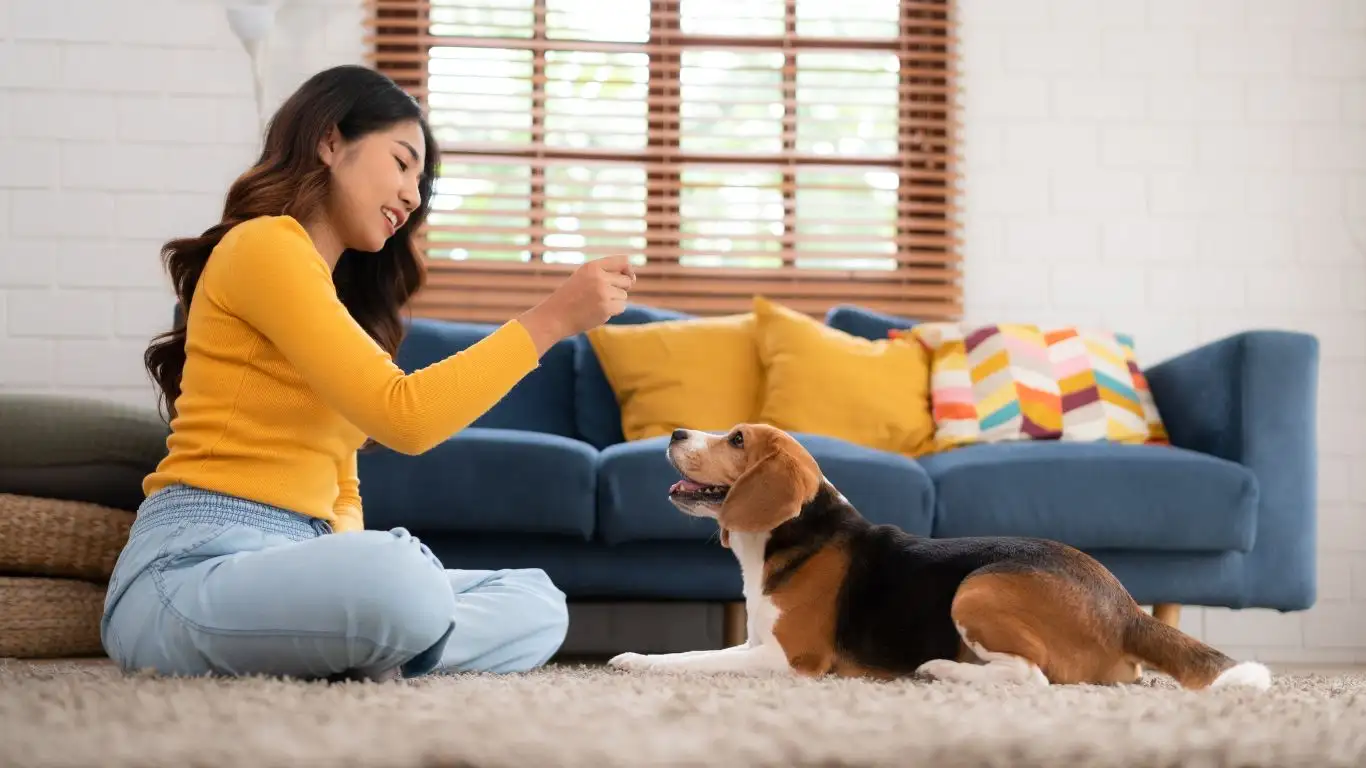
Every dog is unique, and their personality plays a big role in how they respond to personal space training. Some dogs will need more structure, while others may naturally respect boundaries with minimal effort. Here’s how to tailor your approach based on your dog’s temperament:
1. The Overly Enthusiastic Dog
Dogs that get too excited when greeting people (think bouncing, licking, and zoomies) need structured training to channel their energy appropriately. Focus on:
- Teaching a solid “Sit to Greet” command instead of allowing jumping.
- Encouraging calm behavior before giving attention or affection.
- Practicing impulse control exercises, like “Wait” and “Stay.”
2. The Velcro Dog
Some dogs stick to their owners like glue. While this can be endearing, it’s important to encourage independence. Try:
- Rewarding your dog for staying in their designated area rather than following you constantly.
- Providing engaging activities, like puzzle toys, to keep them occupied on their own.
- Using short practice sessions where you leave the room and return once they stay relaxed.
3. The Independent Thinker
Some breeds, like Huskies or Shiba Inus, naturally prefer their own space and may not require much training in this area. However, that doesn’t mean they can’t learn to respect your space. Reinforce boundaries by:
- Ensuring they don’t push into people for attention.
- Using positive reinforcement to encourage polite interactions.
- Teaching a default behavior (like sitting) before receiving affection.
Final Thoughts: Balancing Love & Boundaries
At the end of the day, training your dog to respect personal space isn’t about pushing them away—it’s about creating a healthy, respectful relationship. You can enjoy all the snuggles and affection you want while also teaching your dog when to give you space.
It all comes down to consistency, patience, and positive reinforcement. Set clear boundaries, reinforce them regularly, and remember—dogs learn best when training is fun and rewarding.
References
- American Kennel Club (AKC) – Training Resources & Behavior Insights
- Certification Council for Professional Dog Trainers (CCPDT) – Understanding Dog Training Standards
- Positively (Victoria Stilwell) – Positive Reinforcement Dog Training Tips
- ASPCA – Canine Behavior & Training Advice
Disclaimer
The information in this article is based on professional dog training experience and is intended for general educational purposes. If your dog is displaying extreme behavioral issues, aggression, or anxiety, consult a certified professional dog trainer or a veterinarian for personalized guidance.
